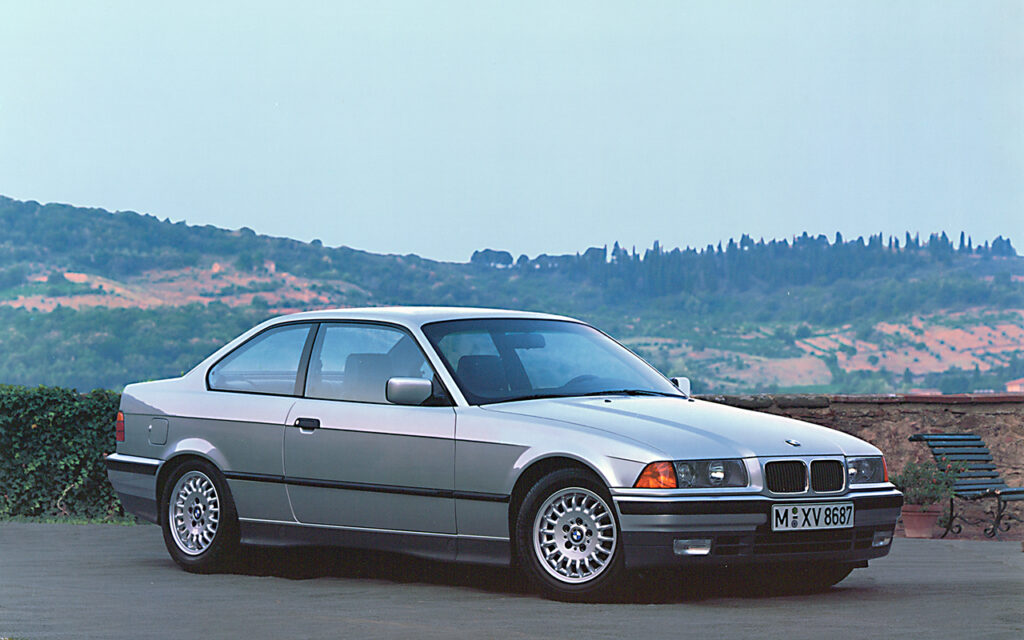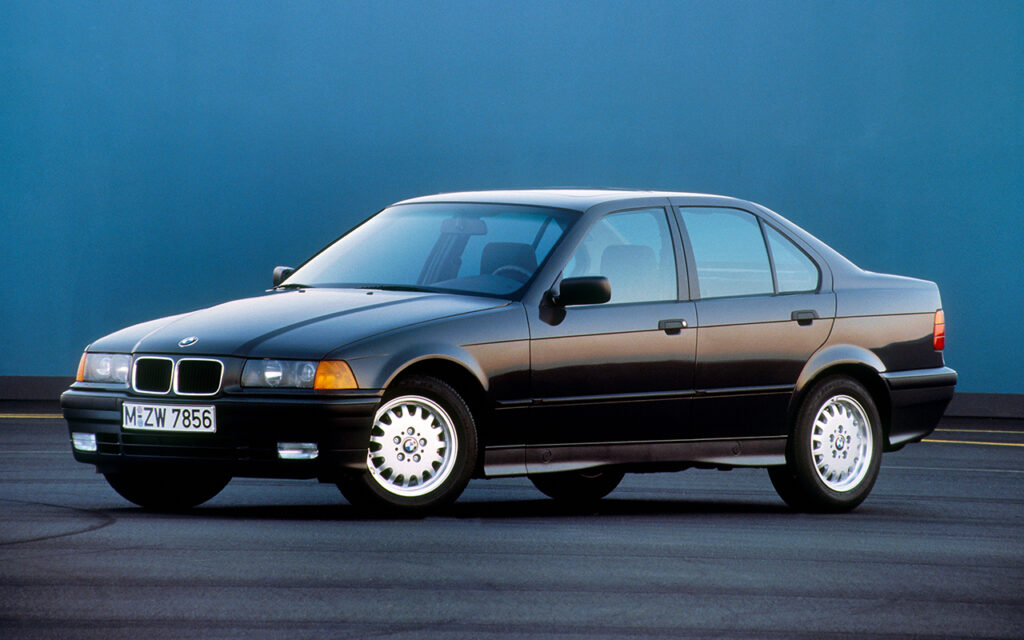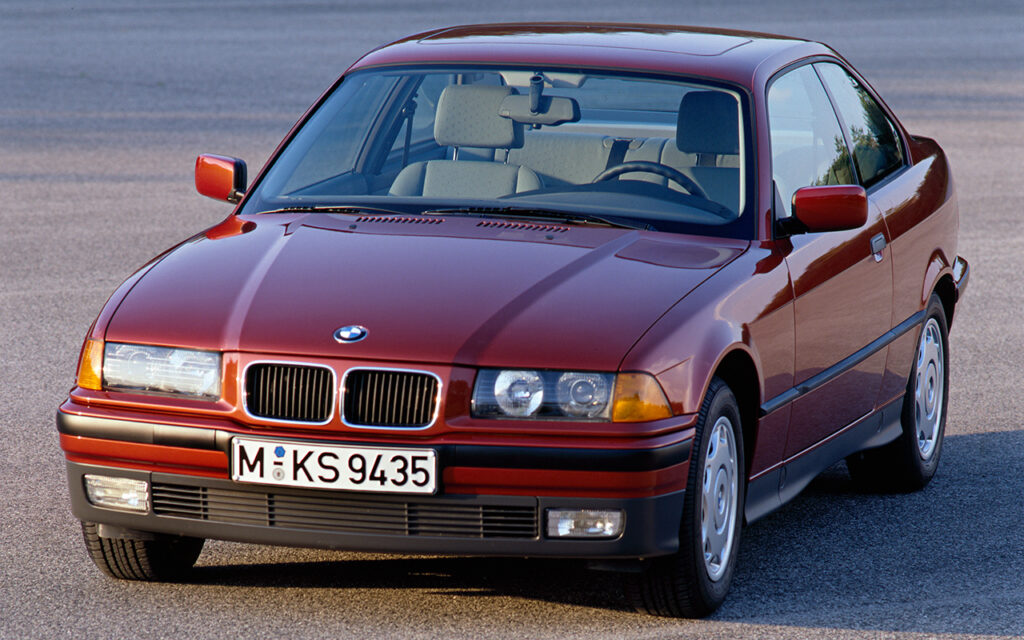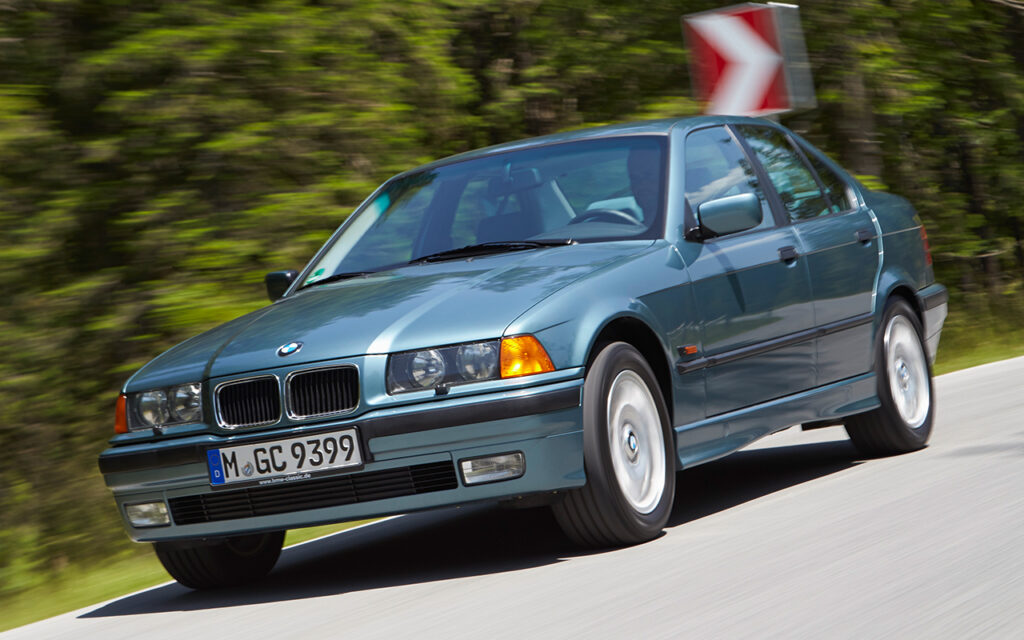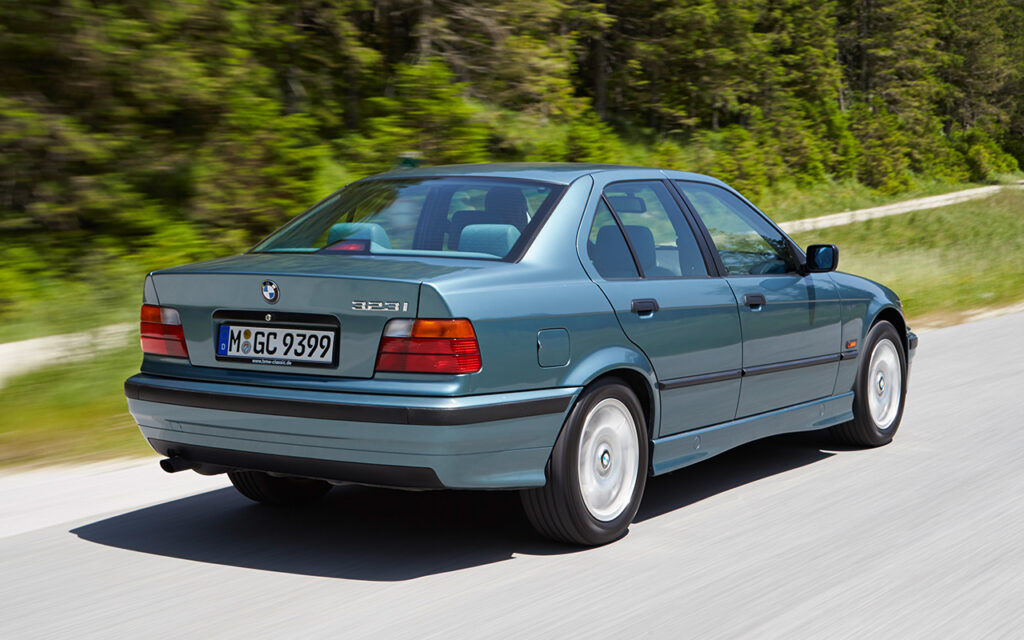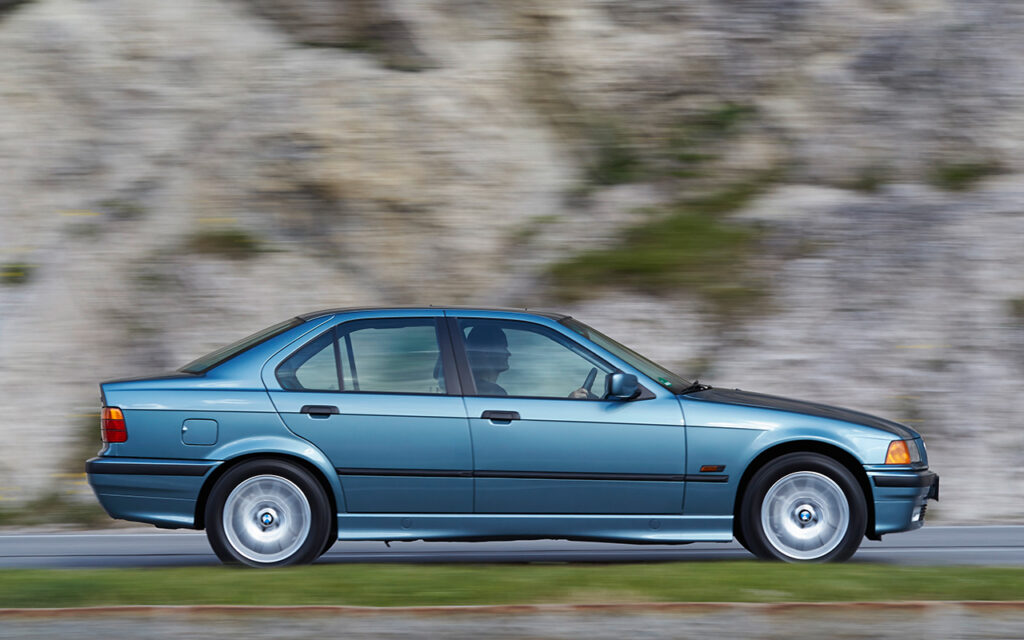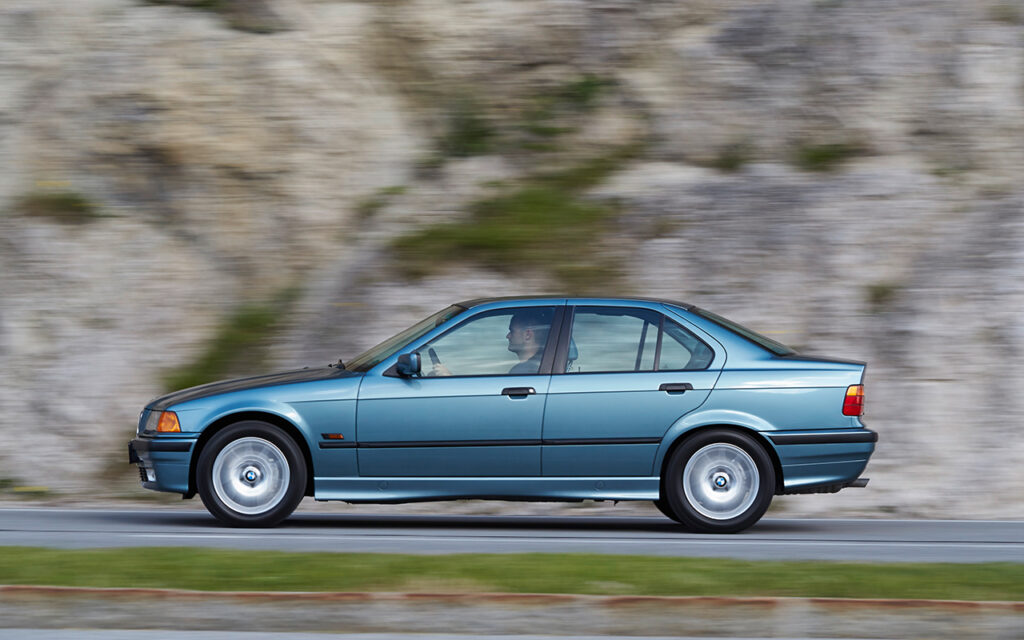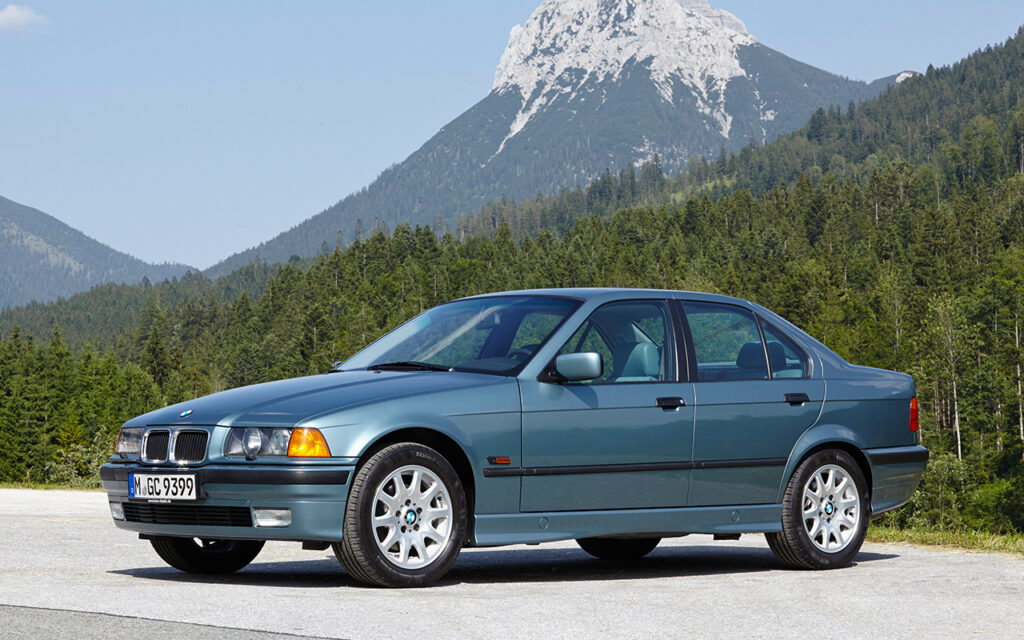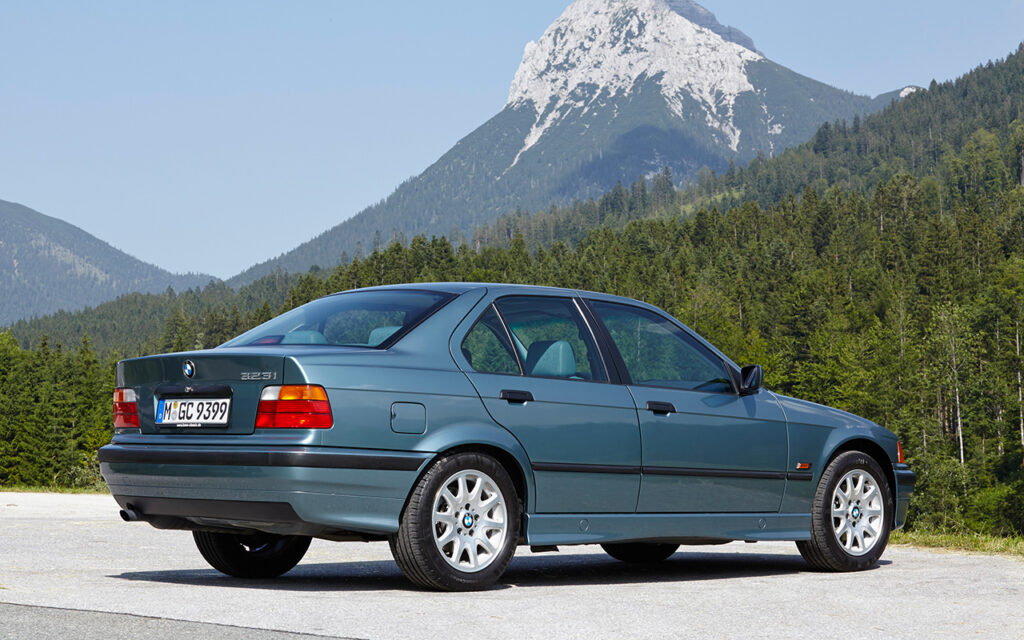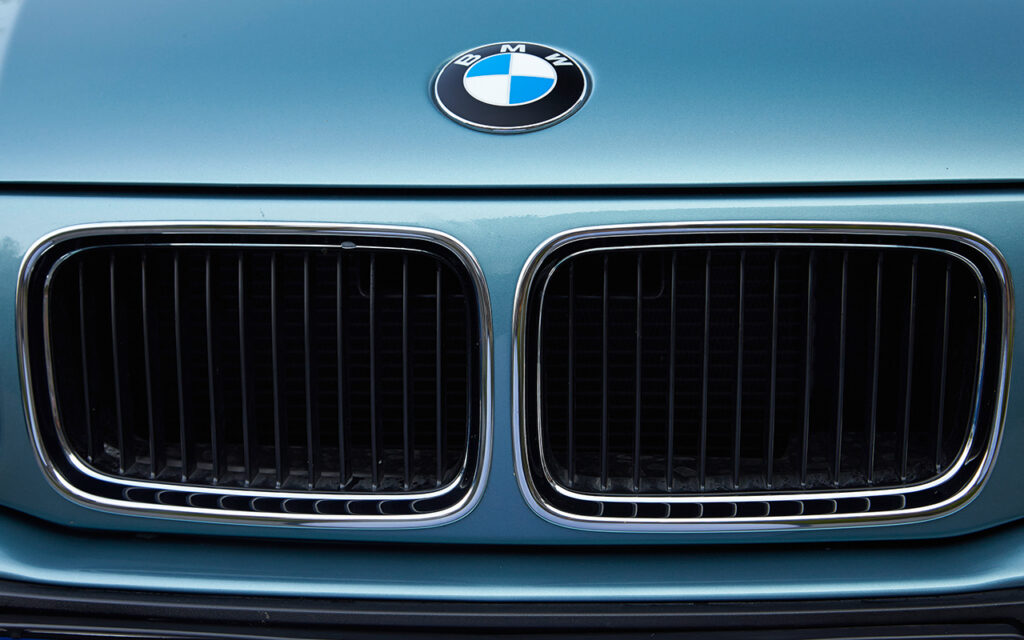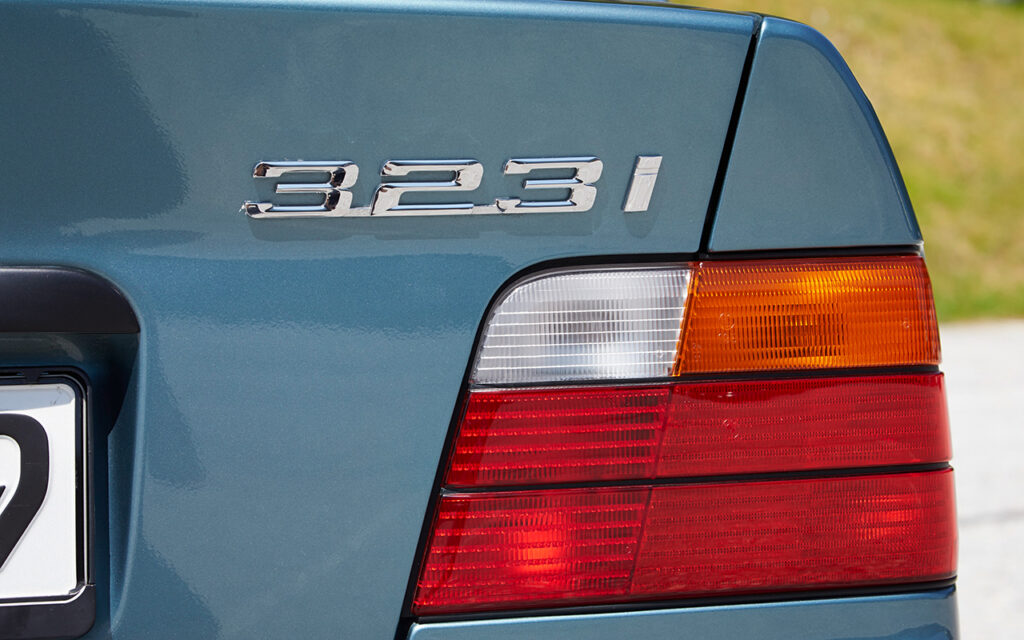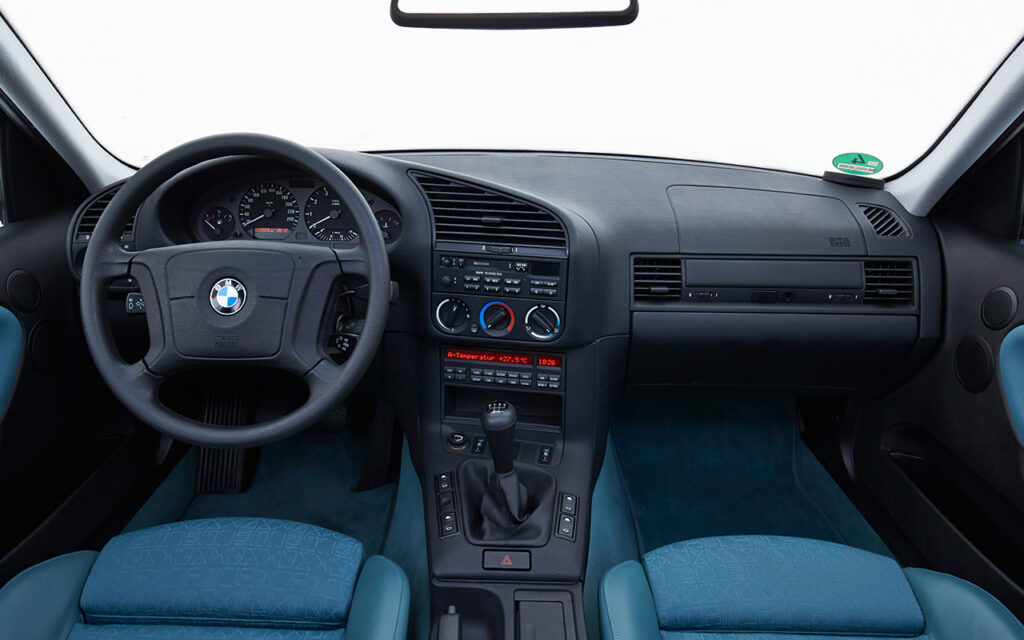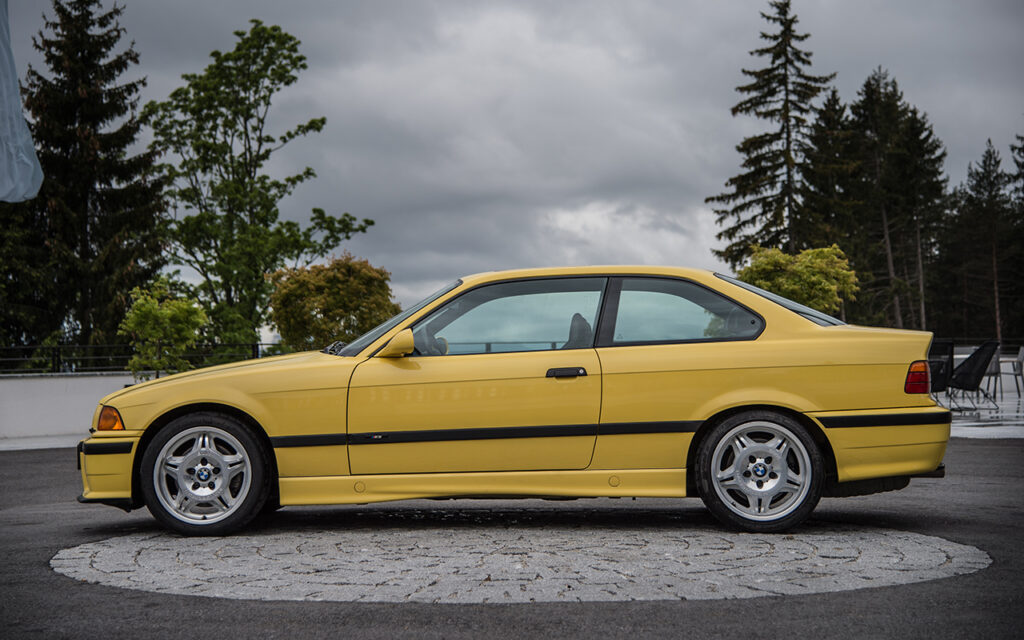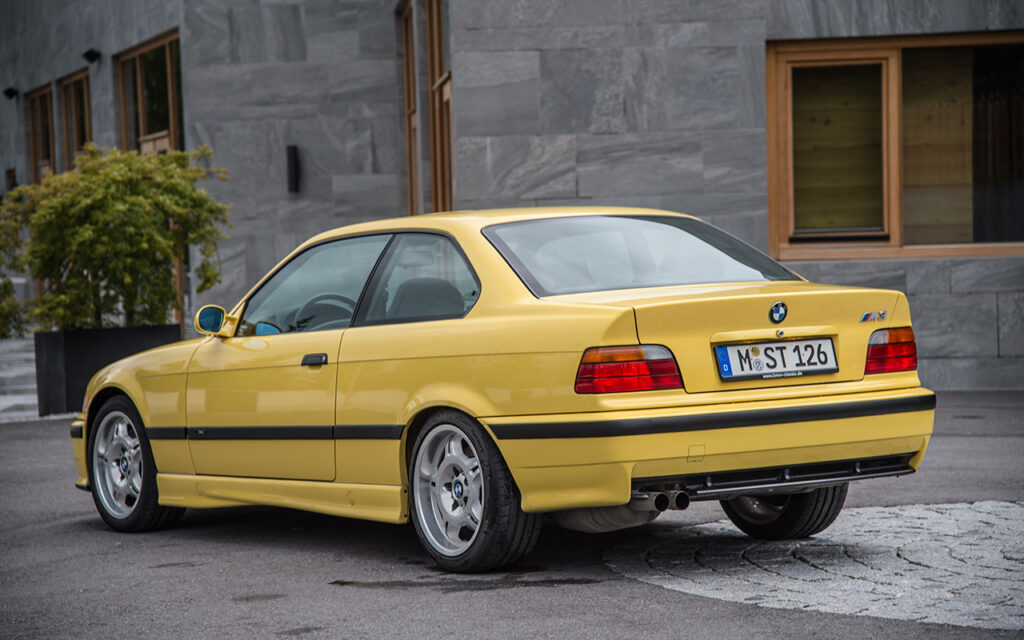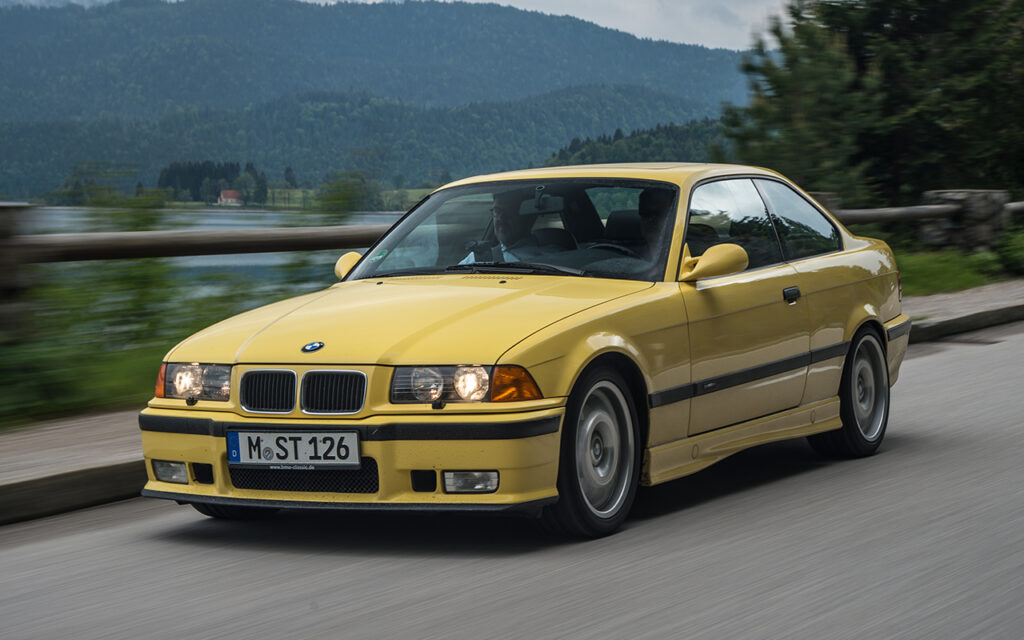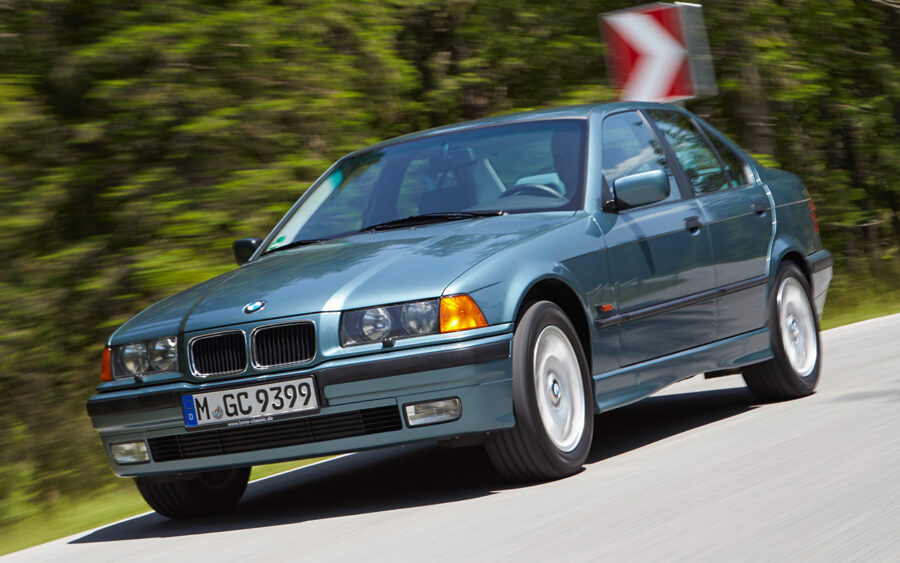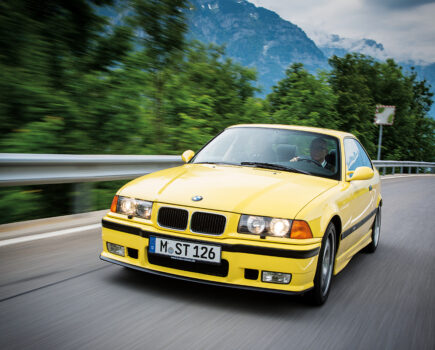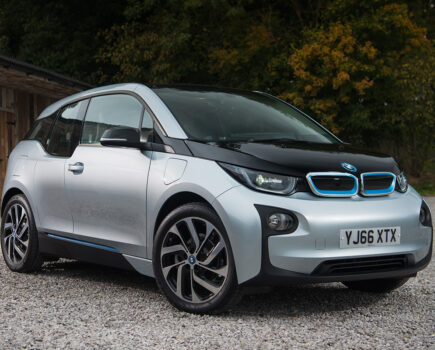Handsome, great to drive and with great support across the board, it’s hard to find a better modern classic than the E36 3 Series
Words: Bob Harper
If you lust after a 5 Series you’ll discover that finding a straight and unmolested E12 or E28 that hasn’t been to the moon and back and isn’t ravaged with rust is a tricky task and while the E34 was built in huge numbers finding a decent example is not as easy as you might have thought. The same applies to the 3 Series – E21s are very thin on the ground now and decent E30s command high prices putting them out of reach of many who fancy reliving their youth.
And that’s where the E36 3 Series comes in – yes it was very different to anything that had come before it but it’s one of those cars that’s aged incredibly well, still looking fresh and appealing today yet packing relatively up to date mechanics and underpinnings and offering an excellent drive. And the best news is that when compared to some other modern classic BMWs an E36 is still pretty affordable. And with four bodystyles (we’re not including the Compact here) to choose from there’s more or less an E36 for everyone.
Of course, many of us will lust after the M3 but if you’re looking for an affordable classic then the prices being asked for the M-powered models may mean that boat has sailed. Don’t worry though, a good six-pot E36 is still a hugely rewarding car to drive and is significantly cheaper to buy, insure and maintain.
Bodywork
While the E36 was sometimes criticised when it was new for being a bit lacking in interior accommodation it did offer quite a step up over the E30 it replaced. For the Saloon – the most common version – the E36 was 115mm longer and 73mm wider than its predecessor but perhaps most crucially its wheelbase increased by 130mm endowing the E36 with better rear seat accommodation, although not so much that it would steal sales away from the 5 Series. As a classic buy there’s plenty of space in an E36 almost no matter which body style you go for and all models bar the Convertible will seat five in relative comfort.
While the E36 might not have had that hewn from solid feel of the E32 Seven or the E34 Five, or even the E30 3 Series, it was better protected when it came to rust resistance than its predecessor. However, the oldest examples are pushing 30-years old now and even the youngest E36s will have been pounding the streets for 20-years, so it’s almost inevitable that there will be some tin worm to contend with unless you are lucky enough to find a really pampered example that’s been garaged all its life. The most obvious areas to check for rust are the front and rear wheel arches, but it doesn’t seem to be quite as much of an issue on the E36 as it is on the later E46 models. The good news is that parts aren’t too expensive (certainly in comparison with older BMW classics) and the supply of good used parts is also pretty extensive.
Examine the front wings for rust around the arches as well as along their trailing edges where they meet the sill behind the front wheel, something that tends to be exacerbated by cars that have the sill extensions. The rear arches can go similarly crusty and if they’re really far gone you’re probably best advised to move on and look at another example, but some bubbling is acceptable and can be ground back and repainted.
At the back have a look for rust on the rear panel where it can form above the bumper but below the boot lid and if it looks like it’s taken hold to a serious extent this can be both costly and time consuming to eliminate. On Tourings give the tailgate a once over as they can rust around the screen and finding a good used spare might not be quite as straightforward as you might think. On cars with mudflaps also have a look at where these are attached to the body as moisture and crud can build up here causing premature rusting.
Assuming a potential purchase doesn’t look too bad on top it’s time to get down on your hands and knees and give the underside a thorough inspection. Plastic bungs in the sill panels can go missing allowing water in which means they can rust from within and even cars that look good on an initial inspection can have totally rotten sills, especially around the jacking points and in front of the rear wheels. Loose underseal can also hide surface rust so once a car has been purchased it would pay to investigate this to avoid heartache further down the line.
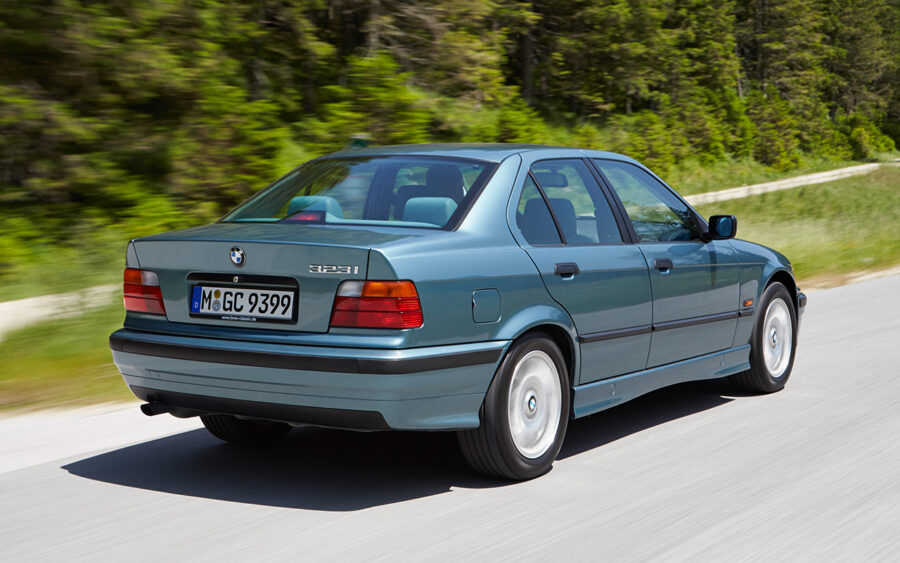
Engines
There are a wide variety of powerplants to choose from and generally speaking they’re pretty durable and offer a wide range of different characteristics. The diesels are, unsurprisingly, the most economical but in their standard form they’re not the most entertaining of E36s and if you’re looking for an E36 to use sparingly as a classic we’d recommend one of the petrol models.
The four-pot in the 316i (either the M40 or later M43) delivered a smidgen over 100hp while the 318i (with larger capacity units from the same engine families) delivered extra poke with up to 115hp. It might not seem like a significant upgrade but with a torquier motor the 318i is a better bet than 316i as the extra power does help to bring the car alive. The best of the four-pots were reserved for the Coupés (and a very small run of saloons late in the E36’s life) and these are the 16-valve M42 and M44 units in the 318iS. With 136hp and 140hp from 1.8- and 1.9-litre units respectively the gave the E36 a proper sporting feel.
Naturally enough it’s the six-cylinder models that tend to be the most coveted and like the other E36s in the range these cars also saw engine changes occur during the life time. Initially we had the 320i and 325i powered by the M50 ‘six with 150 and 192hp and in an attempt to endow these 24-valve unit with some much-needed torque they gained Vanos variable valve timing in 1992. In 1994 these units were superseded by the M52-engined 320i, 323i and 328i with 150, 170 and 193hp respectively. In both forms the 320i needed to be revved hard to extract the performance but the bigger units made the E36 genuinely quick, especially the 328i.
So what to look for? If we start with the M40-engined 316i and 318i it’s probably fair to say that it wasn’t BMW’s finest hour. For starters it’s a belt driven unit which means the cambelt will have to be replaced from time to time and while this is a cost that you could do without it’s the spectre of camshaft wear and noisy hydraulic tappets that is your main concern. If the engine sounds like it’s ticking excessively at idle either the tappets or the camshaft, or possibly both are knackered. This will generally be down to a blocked oil spray bar and replacement of the whole lot could well prove to be uneconomic. Another pretty common fault on the M40 is that an overly complex sump arrangement means that the gasket is prone to failure and in the worst case scenario the gasket can get actually block oil channels leading to oil starvation.
Things improved with the M43 engine and it doesn’t tend to have any major maladies although some units do seem to suffer from an erratic idle. Water pumps can fail leading to overheating but an improved design means you’re much less likely to suffer with the hydraulic lifter problems that affected the M40.
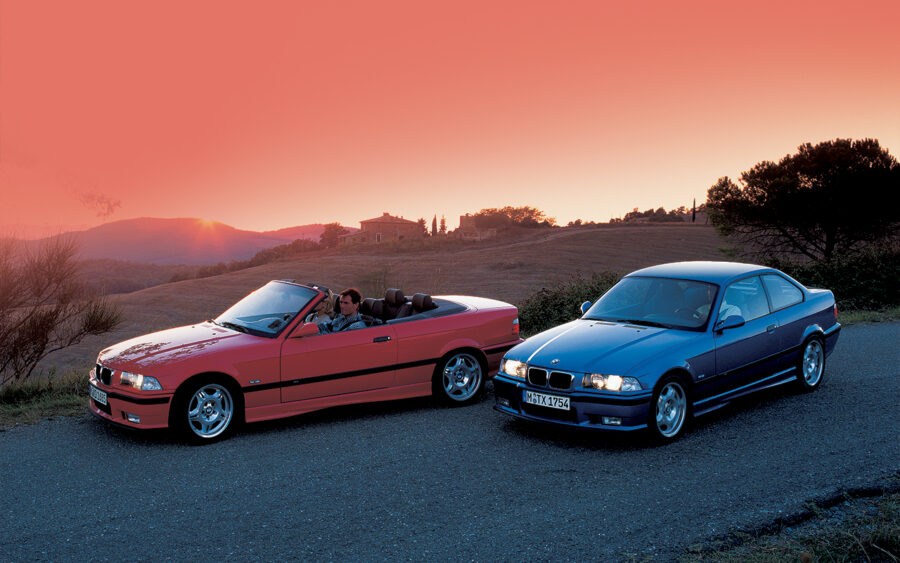
The M42 and M44 16-valve units in the 318iS are generally pretty tough, but do remember that the youngest of these engines is now going to be over 20-years old so some maintenance is not to be unexpected. As the M42 was loosely based on the M40 there’s still the potential for loose sump bolts and leaks from this are common but thanks to a different cylinder head arrangement cam wear is less of a problem. Items to watch out for are a failed profile gasket in the timing cover which could allow oil and water to mix and is an expensive job to fix and an overly noisy engine could well be down to a worn timing chain tensioner. Rough running or a lumpy idle will most likely be caused by replacing perished air hoses. The M44 was a durable unit without serious Achilles’ heels but higher mileage units could well be worn by now and as with most BMW engines of this era do watch out for overheating problems.
Early E36s are becoming thin on the ground these days but from a reliability point of view the early M50-engined cars are the ones to go for. With an iron block they were pretty much bomb proof provided they had regular oil and coolant changes and that they weren’t subject to overheating problems. Fitting a new water pump to any purchase is a wise precaution – early cars had a metal impeller and the bearings on these were prone to wear and in 1993 BMW had more or less swapped over to plastic impellers. These can melt or shear off so fitting a new pump is a no brainer.
Other than that M50s could suffer from some hydraulic lifter noise – most likely if service intervals have been stretched. Coil packs can fail and you’ll probably have a weeping gasket or two to contend with, but nothing hugely serious. Even the versions with Vanos aren’t particularly problematic and second hand units are pretty plentiful if you’re on a tight budget.
The picture for the M52 isn’t quite so rosy, but much of that can be put down to its infamous Nikasil-linered alloy block. The theory was sound but in practice the bore lining was attacked by additives and sulphur in fuel and this led to premature bore wear with high oil consumption, shaking at idle speed and round running. Just about all affected units will have been sorted by now – generally with a replacement block and pistons under warranty back in the 1990s, but it is still worth checking that the new block was of the steel-linered variety as early warranty replacements were on a like for like basis. In February 1998 all M52-engined E36s were fitted with a steel lined block from the factory. The main malady to watch for on an M52 these days is overheating – water pumps can fail and radiators can split or just become
An awful lot of overheating to cook the head gasket and warp the head so keep a close eye on the temperature gauge. The alloy block doesn’t make head gasket replacement an easy task and even the steel-linered blocks can suffer if they’ve become too hot. With decent second hand engines still relatively plentiful many owners go down this route if the original engine has overheated in a major way. Bottom line – don’t let your M52 overheat!
The diesels – 318tds, 325td and 325tds – were relatively advanced for their day but they tended to do big mileages thanks to their economy and most of them are now properly worn out. The 318tds is best avoided as it’s lacking in power and the two six-pot diesels are now very hard to find. Given even a hard driven 328i will return around 30mpg it’s hard to make a case for an E36 diesel these days.
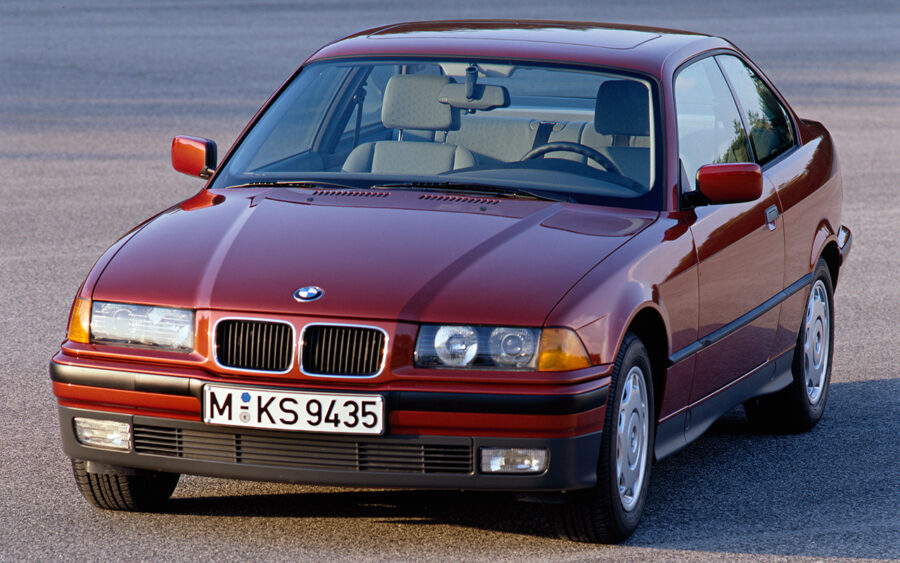
Transmission
There were a plethora of different gearboxes fitted to the E36 – five-speed manuals could be of various different types while four-cylinder models featured four-speed autos, the six-pots getting an extra ratio. The good news is that the vast majority of these ‘boxes should still be functioning pretty well as they’re tough and durable.
For the manuals the ‘boxes were either from ZF or Getrag with the majority of models using the Getrag unit. It’s pretty tough, although they can whine or rattle a little, especially at idle, on higher mileage cars. Unless it’s particularly voluble we wouldn’t worry unduly. Early 325is and later 328is are generally fitted with the ZF ‘box and like its Getrag counterpart it’s pretty much bomb-proof and in the unlikely event you have a problem both manuals are plentiful and cheap second hand. Clutches and flywheels (the latter a dual mass item on later cars and some with air con) aren’t a cause for concern either, although obviously check the clutch biting point isn’t too high on any potential purchase and that it’s not jerky on the move.
The autos are generally pretty tough too and the main thing to watch out for is that they change ratios sweetly and that all of the gears engage. Watch out for the yellow cog warning on the dash which means the box has entered failsafe mode, but don’t immediately assume it’s a gearbox fault as items such as low battery voltage as well as a dodgy alternator or even a failing cam sensor could cause the box to enter failsafe mode. Early cars were due a periodic oil change on every Inspection II service so check the history to make sure this has been done. Later cars were fitted with sealed for life units and we’d recommend that the oil and filter in these is changed if it’s not been done before – that oil could have been in there for 25 years!
Early 325is were known for pulling their diff mountings out of the floorpan and while later cars were strengthened, it’s worth checking the differential’s housing for cracking if you’re looking at an earlier car as it’s an expensive fix. Diffs shouldn’t cause too many problems and the propshaft and driveshafts are equally durable. Prop couplings can wear out or perish over time and diffs will tend to weep a little oil – generally from their output seals – but these are the sort of things you should probably expect on a car of this age. A sensible hit list of planned maintenance should probably have some of these items on it unless a prospective purchase has been fastidiously looked after.
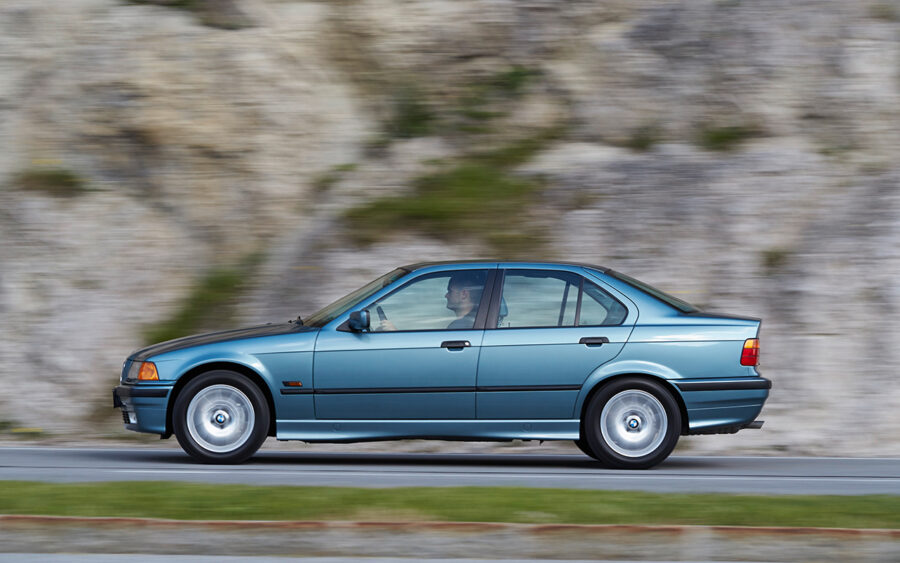
Suspension, steering and brakes
A vibration at motorway speeds most likely points to worn lower control arms while a wobbling front end at 50-60mph suggests worn thrust arm bushings. E36s have a habit of getting through rear trailing arm bushes at a frightening rate – a loud banging from the rear will point to worn bushes. The rear subframe mounts are a known weak spot and worn ones will generate a clonking noise from the rear; they should be changed every 40,000-miles, ideally with a full KDS alignment. Rear suspension top mounts will also generate a clonking noise when worn and it is suggested that you replace them with E46 M3 top mounts and Z3 reinforcement plates, which bolt straight on.
You shouldn’t experience too many issues with the power steering set up as both the rack and pump have proved to be pretty durable and replacements are readily available should the need arise. Do watch for leaking PAS pipes though – replacement with new pipes is the only answer if this occurs.
There aren’t too many horrors on the braking front – four-cylinder cars usually have a discs at the front, drums at the rear set up while six-pot cars feature discs all round. Carry out the usual checks – does it pull up well without pulling to one side, is the handbrake balanced and do the discs look unpitted and unlipped? On cars that have had little use recently you may encounter sticking callipers and all models could probably do with rusty brake pipes being replaced. The ones at the rear are a pain to do as the fuel tank will need to be dropped to facilitate a repair.
Check the ABS light comes on with the ignition and the goes out once the engine is started. Various different ABS setups were deployed and their ECUs can fail, more often on early cars which tend to let water in around the windscreen which drips into the ECU. ABS sensors can be troublesome as they’re pretty old by now and the can rust badly making them a pain to remove.
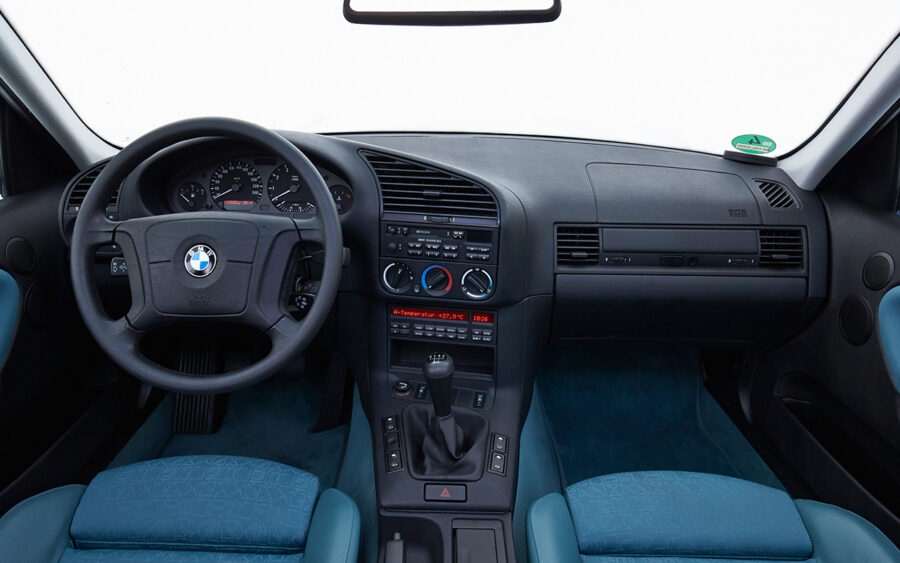
Interior
It’s no secret that the build quality of the earliest examples was pretty shonky – ill fitting gloveboxes, poor quality cloth seats and door trims that could come off in your hand were common ailments – but by 1992 BMW had sorted these problems and the E36 was actually pretty well screwed together. Having said that the E36 is no longer a spring chicken so it’s inevitable some refreshing of interior components could be required.
While it’s not overly endowed with gadgets do check that those fitted work properly. If a potential purchase is fitted with the OBC check the pixels work and if it has the digital air con panel then have a good look at this too – as well as checking to see if the air con actually works. It could be that the control unit or fan resistor has failed, but it’s more than likely there will be ailments with the condenser or the compressor.
Electric window motors can fail and the glass can come adrift from the regulators and the regulators themselves can break. Use genuine BMW parts for repairs as they’re much better than pattern parts and you don’t want to be taking the door trim panels off more often than you need to. Even after BMW upgraded the interior quality interior door trim panels were a bit of a weak point and their inner cardboard can disintegrate around the trim clips. Modern glues can work wonders along with some new trim clips.
After a quarter of a century the seats may well look a little second best, but often a good clean will work wonders. If that doesn’t bring things back to life secondhand seats are still pretty plentiful while a good trimmer can repair worn cloth and worn bolster padding without breaking the bank. Electric seats are pretty rare but if they’re fitted make sure all the motors work.
On Tourings check the load are for damage and if the roller cover is still present check it’s undamaged as good secondhand ones are hard to come by.
With a Convertible you need to examine the hood to check its condition, both inside and out. On the inside the lining can come away from the hood which looks unsightly and can catch in the mechanism. Generally speaking the electric set up works pretty well but its good practice to lubricate all the joints from time to time to keep things operating smoothly. The motors themselves are pretty durable and any hood maladies will more than likely be down to faulty sensors.
BMW 3 Series (E36): our verdict
There’s certainly much to be said for buying an E36 – they’ve aged well and still look fresh – and in the larger engined models they still have enough performance to satisfy the keen driver. Parts availability is still pretty good and provided you don’t buy a rust bucket with a knackered engine running costs should be pretty painless, especially for the competent DIYer as nothing on the car was too complicated.
Now is the time to buy though as prices are starting to creep up with some classic dealers starting to ask big money for the best examples. There are still some bargains to be had though – scour the classifieds and if you’re patient you can still find good E36s without breaking the bank.
